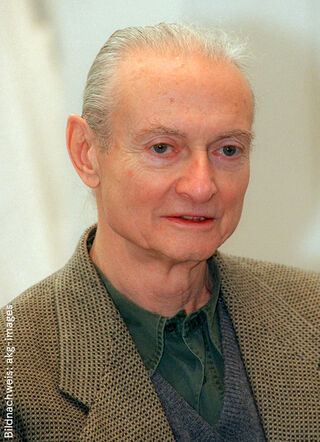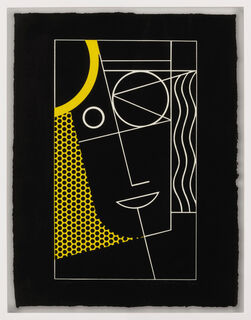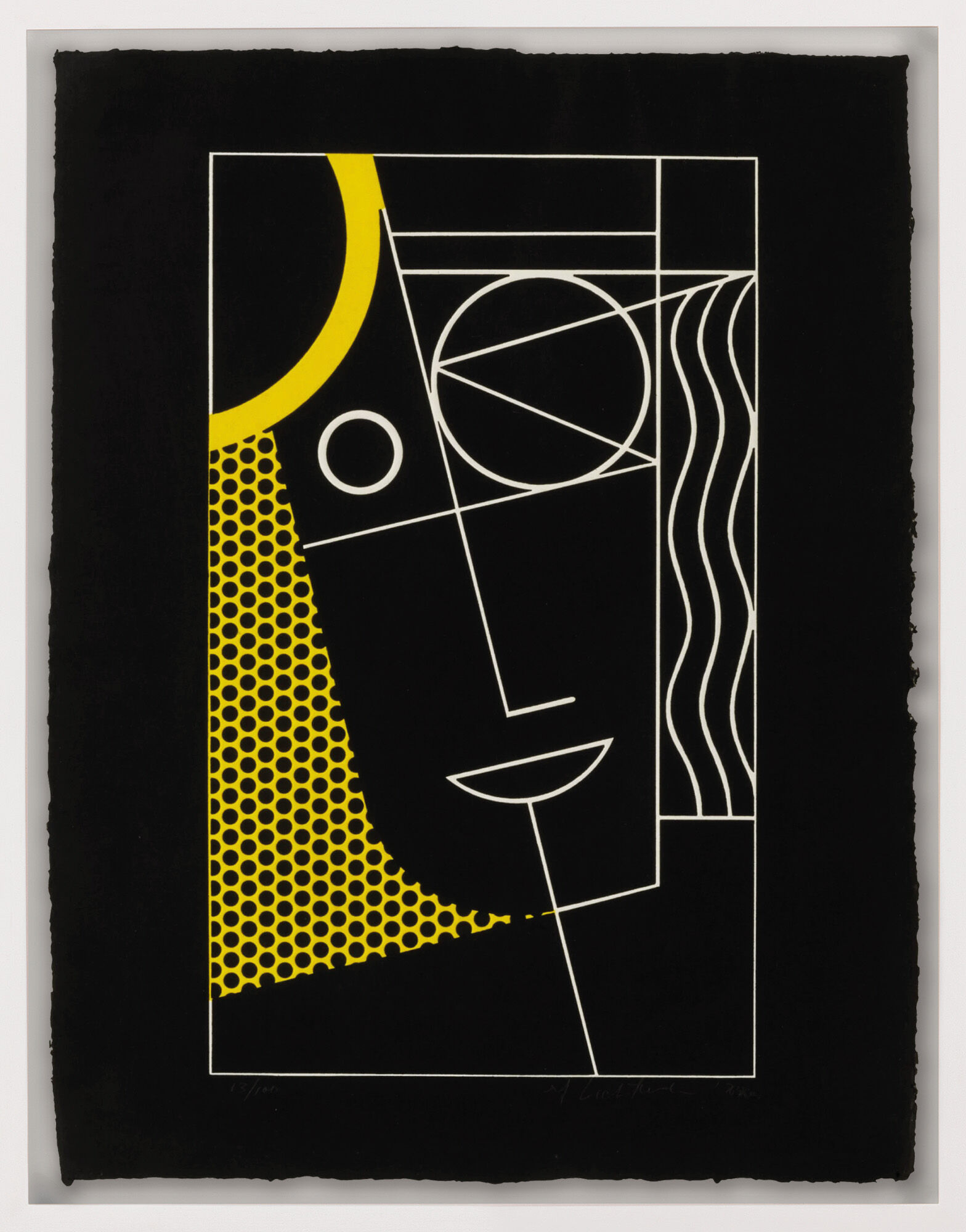Picture "Modern Head #2 (From the Series Modern Head)" (1970)


Picture "Modern Head #2 (From the Series Modern Head)" (1970)
Quick info
limited, 100 copies | numbered | signed | dated | lithograph and line cut on paper | framed | size 68 x 53 cm
Detailed description
Picture "Modern Head #2 (From the Series Modern Head)" (1970)
"Modern Head #2" is part of a series of abstract heads that Roy Lichtenstein created starting in the 1970s. The print was made at the renowned workshop Gemini G.E.L. in Los Angeles, which is highly regarded by visual artists. A copy of this print is also part of the collection of the Museum of Modern Art in New York.
Lithograph and line cut with embossing, 1970. 100 copies on handmade waterleaf paper, numbered, signed and dated. Catalogue raisonné Corlett 92. Motif size/sheet size 61 x 45.7 cm. Size in frame 68 x 53 cm as shown.

About Roy Lichtenstein
1923-1997
The American Roy Lichtenstein left his mark on Pop Art as only Andy Warhol did. His are exhibited in all the major art metropolises of the world.
His distinctive artistic feature is dots, which he applies in combination with areas of colour. A technique that had initially been developed for industrial printing in order to save ink and costs. Unlike Warhol, who prints his art, Lichtenstein paints these dots by hand. Perhaps the most famous representative of Pop Art was actually a classical painter.
Lichtenstein was born in New York on 27 October 1923. The son of a real estate broker, already knew that he wanted to become an artist at an early age. So, he began painting as a teenager. His role models were none other than Pablo Picasso, Claude Monet and Piet Mondrian.
Lichtenstein discovered the world of comics at the beginning of the 1960s after he had initially adopted the American Abstract Expressionism style. As a Pop artist, he emphasised the clichéd nature of a motif that, despite the suggestive titles, did not arouse any emotion in the viewer. In the mid- to late-1950s, Pop Art replaced the abstract art movement. It made use of kitschy or banal everyday culture images as a counter-reaction to the art of the previous decades, which rejected everything representational.
Lichtenstein studied at the Art Students League of New York and Ohio State University. He soon found his typical style: rough grids and cut-outs from the banal world of consumerism, comics and advertising. In his pictures, he was aiming to show the mechanisms of action in this world. The enlargement and simplification of familiar objects were intended to stimulate a new way of seeing.
But not only comics with love scenes, war scenes and science fiction stories were his inspiration, but also well-known works of art such as Claude Monet's "Rouen Cathedral", Pablo Picasso's portraits of women or Piet Mondrian's abstract paintings. His late work deals intensively with Japanese culture.
The painter and graphic artist, who died on 29 September 1997, also experimented with sculpture, using mainly brass, glass and marble.
The German magazine FOCUS celebrated him as the king of Pop Art on the occasion of a large exhibition in the Munich Kunsthalle. Roy Lichtenstein, the Pop artist from the very start, is one of the most sought-after artists in the world. His exhibitions – e.g. at the Guggenheim Museum in New York – are attracting record numbers of visitors.
The field of graphic arts, that includes artistic representations, which are reproduced by various printing techniques.
Printmaking techniques include woodcuts, copperplate engraving, etching, lithography, serigraphy.
Graphic artwork in the making of which the artist combines at least two graphic techniques.


